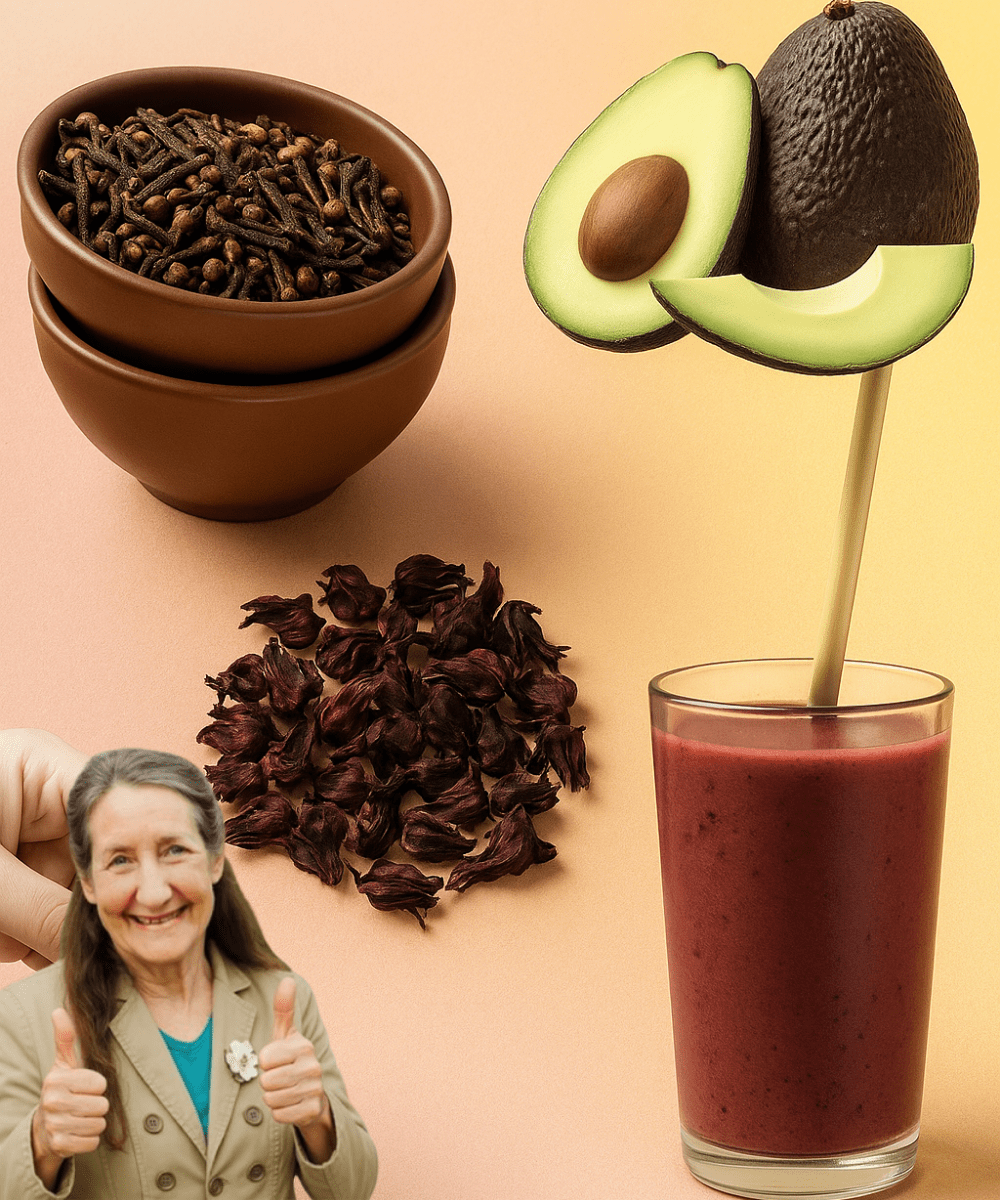Imagine this: a small, aromatic seed that generations once praised as a “blessing,” now resurfacing in modern kitchens and wellness routines. Not as a miracle. Not as a cure-all. But as a smart, science-watched addition that could support balance in the systems we lean on most: heart, blood sugar, circulation, inflammation, and immune resilience.
If that sounds like hype, stay with me. This is a grounded, realistic look at a traditional spice with modern relevance. The goal is simple: help you decide—calmly and clearly—whether this seed deserves a place in your daily routine.

First, What Is the Seed?
It’s black seed, also known as Nigella sativa or black cumin. Tiny. Dark. Smoky-aromatic. Sprinkled over breads in the Middle East, folded into Indian and North African spice blends, and steeped in traditional wellness practices for centuries. Today, it’s showing up in oils, capsules, and ground seed form—and drawing interest from researchers for one primary reason: its dense cocktail of bioactive compounds, especially thymoquinone.
💡 Key idea: You won’t find a single “magic” molecule in real food. What makes black seed interesting is the ensemble of compounds that appear to act on everyday processes like oxidative stress, vascular tone, and metabolic responses.
Why Black Seed Is Having a Moment
🧭 We’re overcorrecting from extremes. For years, many of us swung between fast fixes and rigid rules. Now there’s a gentler middle path: build a strong foundation with habits and foods that support how the body already works. Black seed fits that approach—not a headline-grabbing miracle, but a steady, supportive addition you can actually stick with.
🧪 Tradition meets testing. Ancient texts called it the “seed of blessing.” Modern laboratories spotlight thymoquinone and a constellation of antioxidants and fatty acids. The result is a legitimate research interest in how black seed might complement lifestyle and medical care in metabolic and cardiovascular health.
🧘 Realistic expectations. If you’re looking for a lightning bolt, this isn’t it. If you want a small daily nudge toward steadier energy, calmer joints, and more balanced numbers—paired with sleep, movement, and a sensible plate—black seed is worth a look.
How It May Help: The Everyday Systems That Matter
🔁 Metabolic balance after meals
Your body is constantly smoothing out highs and lows—particularly after you eat. Black seed compounds are being studied for how they may help cells respond to insulin and moderate post-meal swings. Translation: potentially fewer peaks and crashes, and a steadier “feel” across your day.
💓 Blood pressure and vessel relaxation
Think of your arteries like a dynamic road system. When the roads are flexible and traffic flows, everything downstream works better. Early trials suggest black seed extract may support modest improvements in blood pressure, likely tied to supporting the inner lining of blood vessels.
🌬️ Circulation and oxygen delivery
Good circulation is quiet health: warmer hands, less sluggishness, more “even” energy. The antioxidant and fatty acid profile in black seed is being explored for its role in vascular function—keeping blood flow efficient so oxygen and nutrients get where they’re needed.
🔥 Calming background inflammation
Low-grade, chronic inflammation is the persistent hum that wears us down. Thymoquinone has been investigated for anti-inflammatory activity, which may explain why some people report easier movement and clearer headspace over time.
🛡️ Antioxidant defense and cellular housekeeping
Oxidative stress is a normal byproduct of life; the goal isn’t zero—just better balance. Antioxidants in black seed may help buffer that stress and support normal cellular repair processes. Early lab research also explores how compounds in black seed interact with pathways related to cell turnover and protection.
🤧 Seasonal and immune support
Traditional use often ramped up during seasonal transitions. Modern interest centers on how the seed’s antioxidants may help maintain balanced immune readiness—alert but not overreactive.
❤️ Heart health, the long game
A calmer inflammatory environment and supported lipid balance can add up over the months. Research has examined potential impacts on LDL and HDL profiles alongside vascular function. None of this replaces medical care, but it may compliment the daily habits that protect your heart.
Two Human Stories (And Why They Matter)
🙂 Maria, 54—looking for steady energy
She added black seed oil under medical guidance. Weeks later, she described a “calm kind of energy” and less morning stiffness. Was it only the oil? Probably not. But it may have helped unlock momentum—better breakfasts, more walks, earlier bedtimes—because she felt better.
🧭 James, 61—focused on blood pressure and circulation
He blended a teaspoon of black seed oil into his morning smoothie, kept up his medications, and watched his numbers. Over months, he saw consistent, modest improvements. His physician approved, and the small habit stuck.
📌 Why stories help: Not proof. Not guarantees. But they’re reality checks: most benefits arrive as subtle shifts you notice in the flow of your day. That’s exactly the kind of improvement you can build a long-term routine around.

Black Seed vs Popular Alternatives
🥄 Black seed: thymoquinone-rich, smoky, slightly bitter. Traditionally associated with immune and heart support, vascular tone, and metabolic steadiness.
🧄 Garlic: known for allicin and a sharp, savory profile; widely used for cardiovascular and general wellness.
🧡 Turmeric: curcumin-rich, earthy, and often paired with black pepper for absorption; popular for joint comfort and antioxidant support.
🎯 Smart approach: You don’t have to choose. Many people rotate or stack these foods strategically—small, consistent amounts that fit taste and tolerance.
How to Use It (Safely and Sanely)
🥄 Black seed oil
Start with ½ teaspoon daily with food, then work to 1 teaspoon if you feel good. The flavor is robust; mixing into yogurt, dressings, or a smoothie helps.
🌱 Ground seeds
Sprinkle on salads, roasted vegetables, or warm grains. The heat releases aroma; the crunch adds interest. Store in a cool, dry place.
💊 Capsules
A clean option if you dislike the taste. Choose brands with third-party testing and clear labels. Follow the suggested use on the package.
⚠️ Safety notes
Talk with your healthcare provider if you’re on medications—especially for blood pressure or diabetes—or if you’re pregnant, nursing, or planning a procedure. Start low. Go slow. Pay attention to how you feel in the first two weeks.
What the Science Actually Says—Without the Hype
🔬 It’s promising, not definitive.
Human studies suggest modest support for blood pressure, lipid balance, and post-meal glucose responses. Lab studies help explain why, highlighting thymoquinone’s anti-inflammatory and antioxidant roles.
🧩 Context matters.
Benefits tend to be incremental and are strongest when you’re also sleeping well, moving most days, eating fiber-rich meals, and managing stress. Black seed is a tool, not the toolbox.
⏱️ Consistency beats intensity.
Most trials run for weeks to a few months. That means you’ll evaluate black seed the same way: give it steady time, track how you feel, and check in with your practitioner if you monitor numbers.
The Flavor Factor: Make It Delicious
😋 Warm grain bowl booster
Stir ½ teaspoon of oil or a teaspoon of ground seed into a bowl of quinoa with lemon, herbs, and roasted vegetables.
🥗 Citrus-herb dressing
Olive oil, lemon juice, a touch of honey, pinch of sea salt, minced garlic, and a whisper of black seed oil. Drizzle over crunchy greens.
🍵 Evening ritual
A mug of warm water with a squeeze of lemon and the tiniest splash of black seed oil. Slow sip. Slow breath. Slow evening.
Pro tip: the flavor is assertive. Start with less than you think, then tune it to your taste.
Common Myths, Gently Debunked
❌ “It cures everything.”
No food does. Black seed supports; it doesn’t replace medical treatment or healthy routines.
❌ “More is better.”
Not with potent botanicals. Your aim is the smallest amount that helps you feel steady.
❌ “If I don’t feel it in two days, it doesn’t work.”
Most meaningful changes are cumulative. Evaluate after several weeks, not several hours.
Who Might Appreciate It Most
💼 Busy professionals who want steadier afternoons without relying on another coffee.
🏃 Active adults managing joint comfort and recovery.
🩺 People watching blood pressure, lipids, or post-meal glucose in partnership with their clinicians.
🌦️ Seasonal shifters who feel dips in resilience when the weather turns.
If any of those sound like you, black seed may be a helpful experiment—simple, compact, and easy to keep in your kitchen.
A 14-Day Gentle Start Plan
🗓️ Days 1–3
Add ¼–½ teaspoon of oil with a meal. Notice taste, digestion, and energy in the next few hours.
🗓️ Days 4–7
If you feel good, move toward ½–1 teaspoon daily. Try it in a dressing or smoothie. Note any changes in morning stiffness or afternoon dips.
🗓️ Days 8–14
Stay consistent. If you track blood pressure or post-meal glucose, keep your usual routine and record your numbers. Jot down sleep quality and mood.
📒 Check-in at Day 14
Ask: Do I feel steadier? Is the taste workable? Any numbers trending in a direction I like? Decide whether to continue, pause, or adjust the dose—ideally with your clinician’s input if you monitor health metrics.
Buying Tips You’ll Actually Use
🔎 Labels that mean something
Look for clear sourcing, third-party testing, and a harvest/press date for oils.
🧴 Dark glass matters
Choose dark glass bottles for oil and store them away from heat and light. Aroma should be aromatic and peppery, not rancid.
🧪 Avoid loud claims
Steer clear of products promising miracles. Choose quiet quality over flashy promises.
When You Might Skip It
⏸️ If you’re already juggling multiple botanicals, if taste is a deal-breaker, or if your clinician advises against it for your specific medications or procedures, that’s wisdom too. Wellness lives in fit, not in fads.
The Bottom Line
✨ Black seed is a small act with potentially steady returns.
It’s not here to replace your doctor or your daily habits. It’s here to support them—calmly, consistently, and with a flavor that reminds you you’re doing something intentional for yourself.
If you try it, do it like a scientist of your own life: start low, stay curious, track how you feel, and give it long enough to be fair. Pair it with fiber-rich meals, deep sleep, regular movement, and moments that de-stress your nervous system. That combination is where quiet, durable change lives.
📝 Important note: This article is for informational purposes only and is not medical advice. Always consult a qualified healthcare provider before changing your regimen, particularly if you take medication for blood pressure, diabetes, or other conditions.






